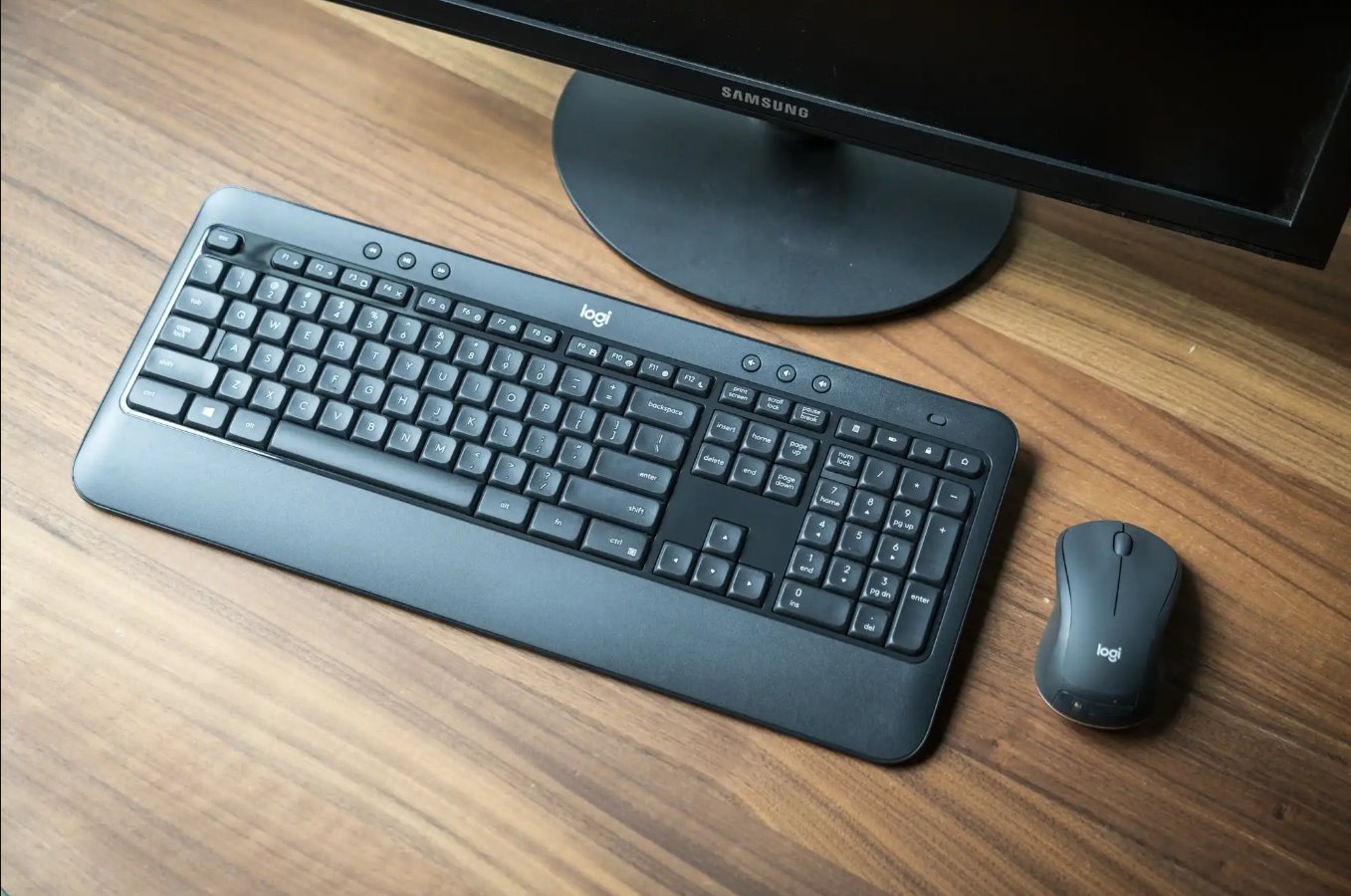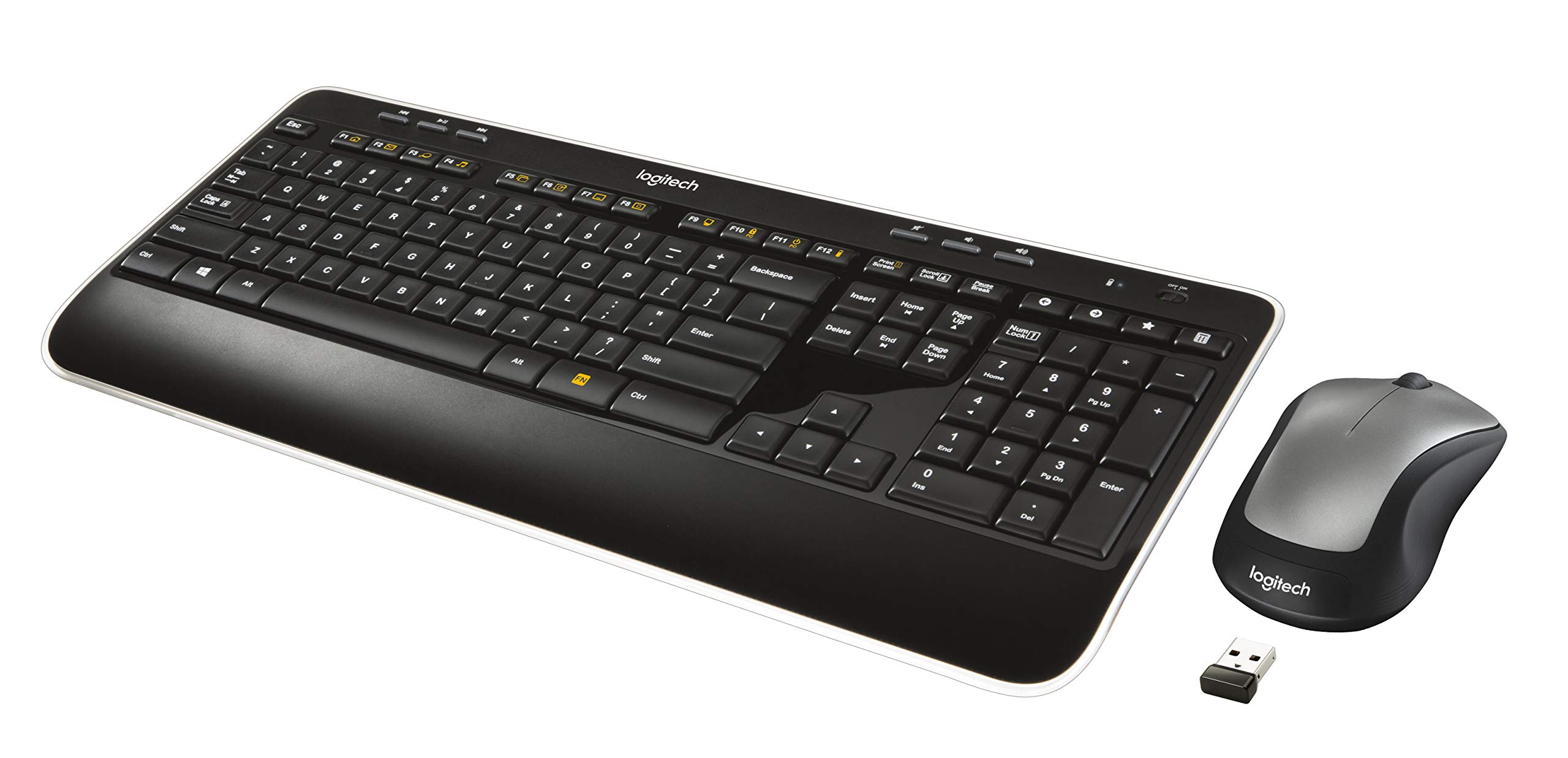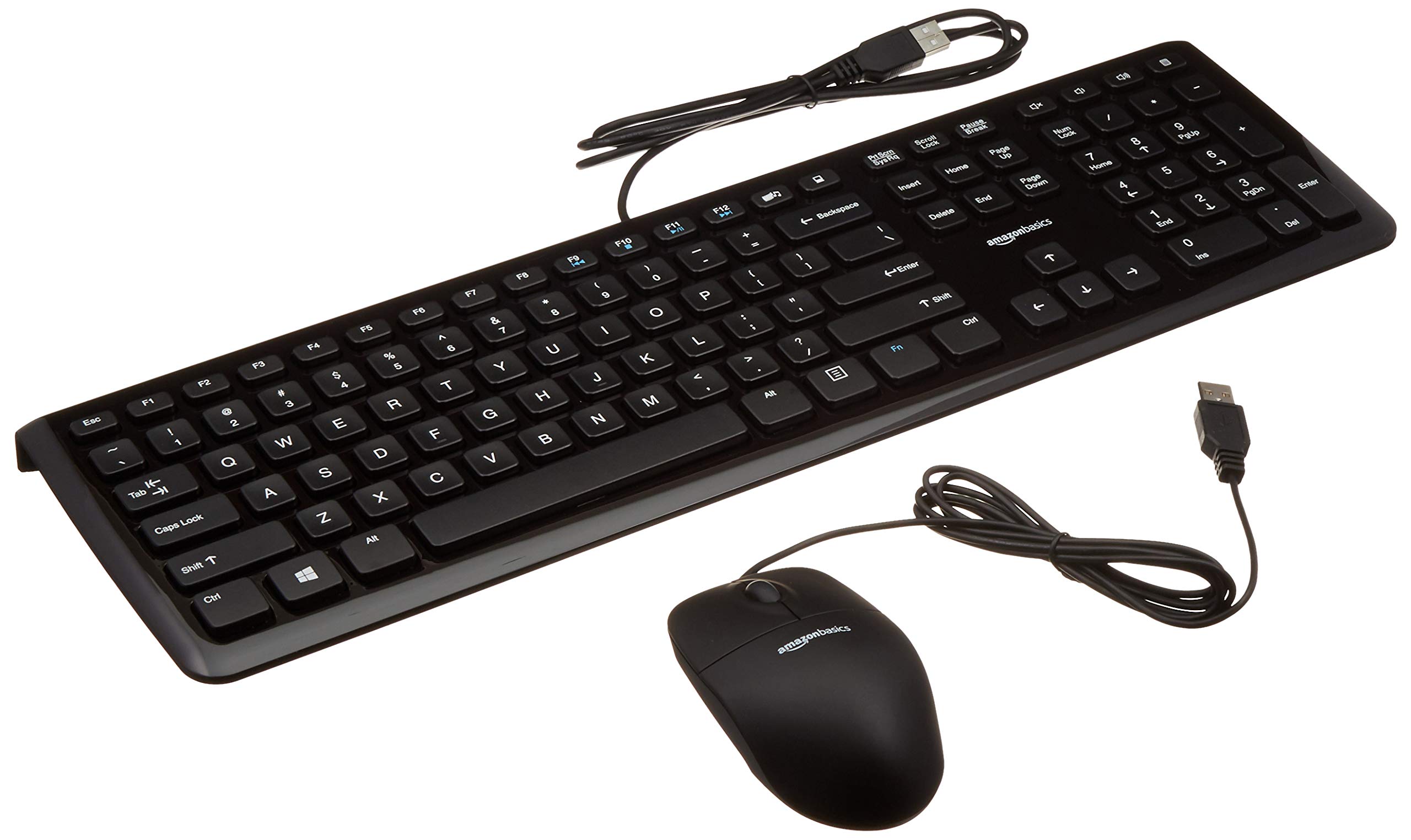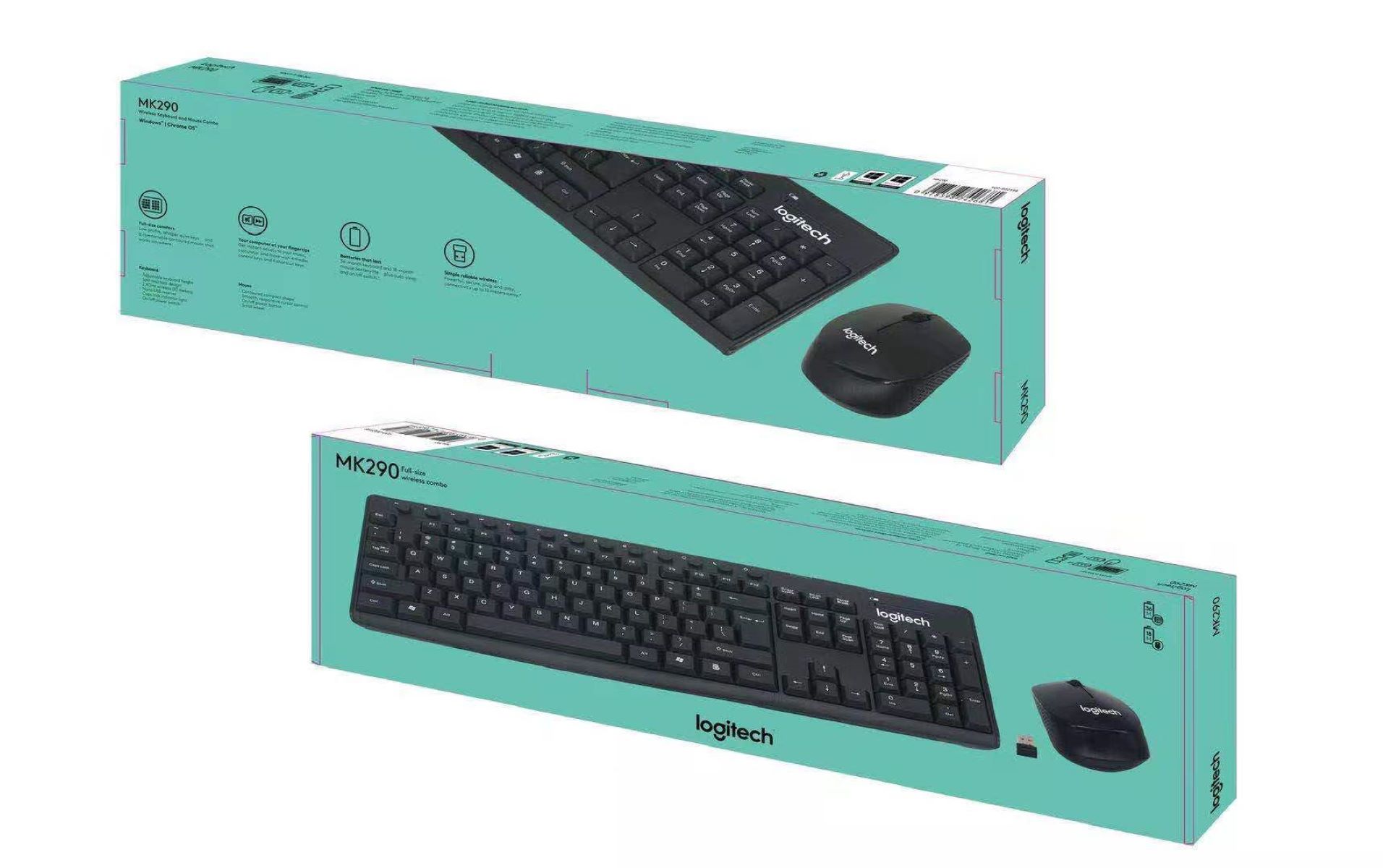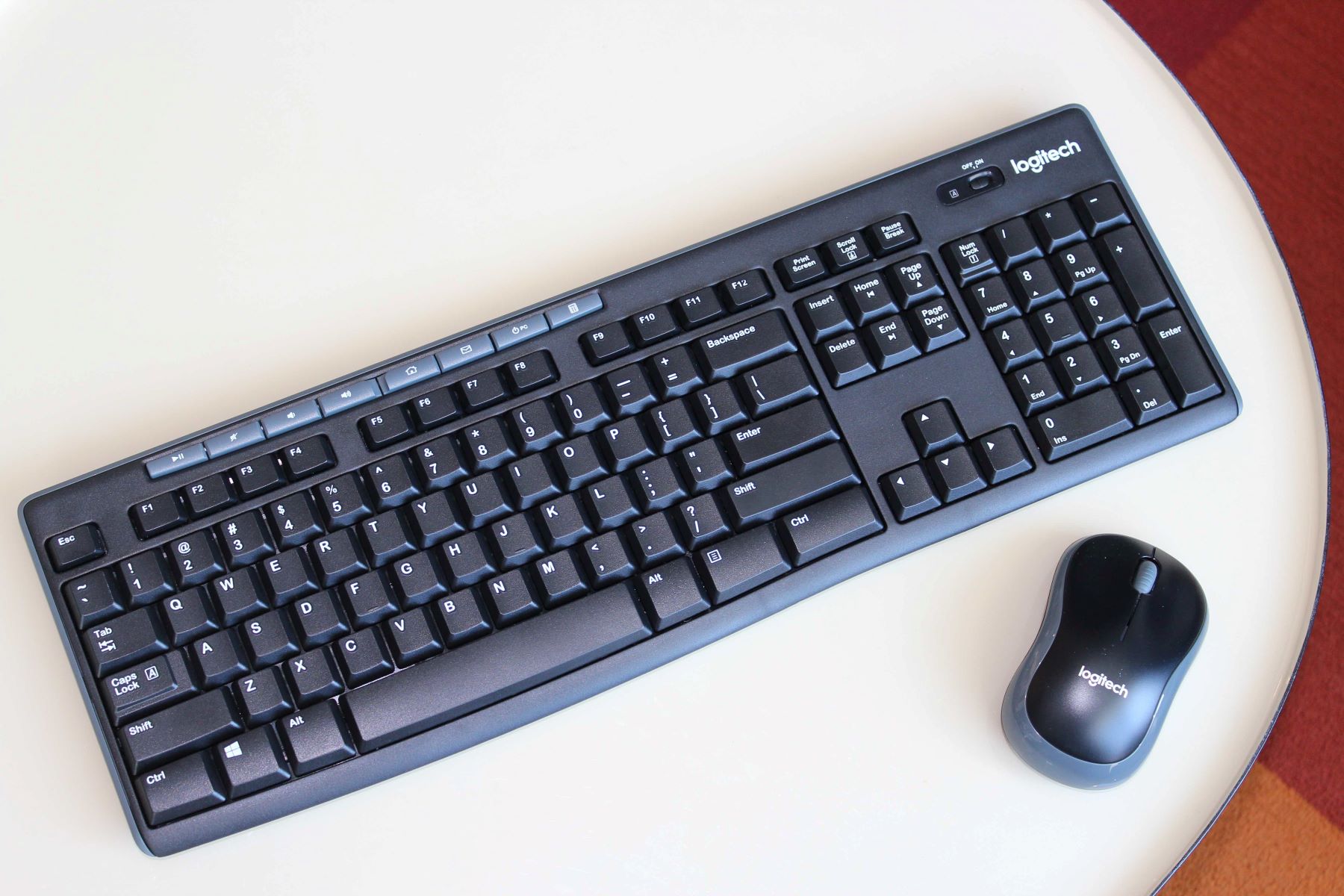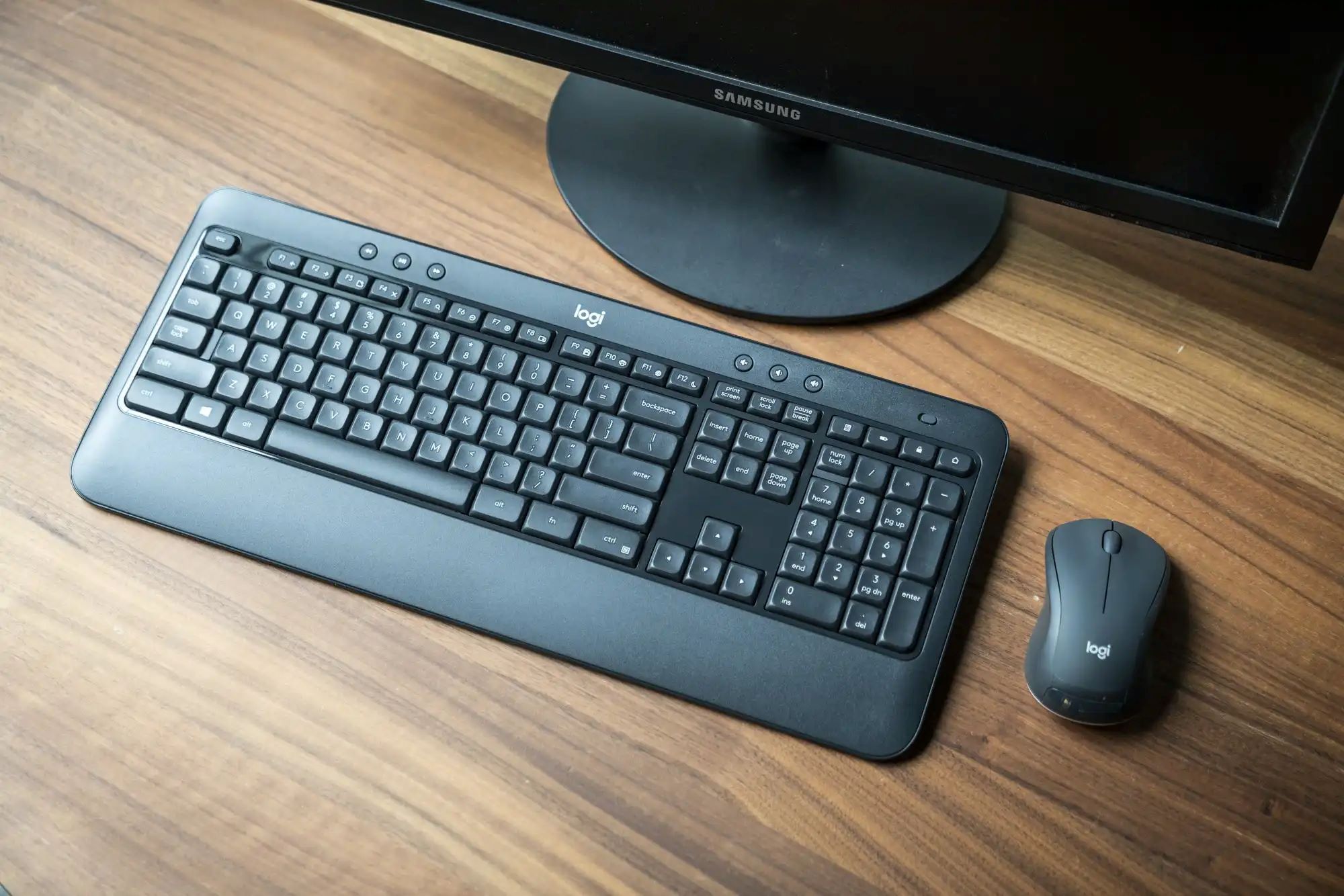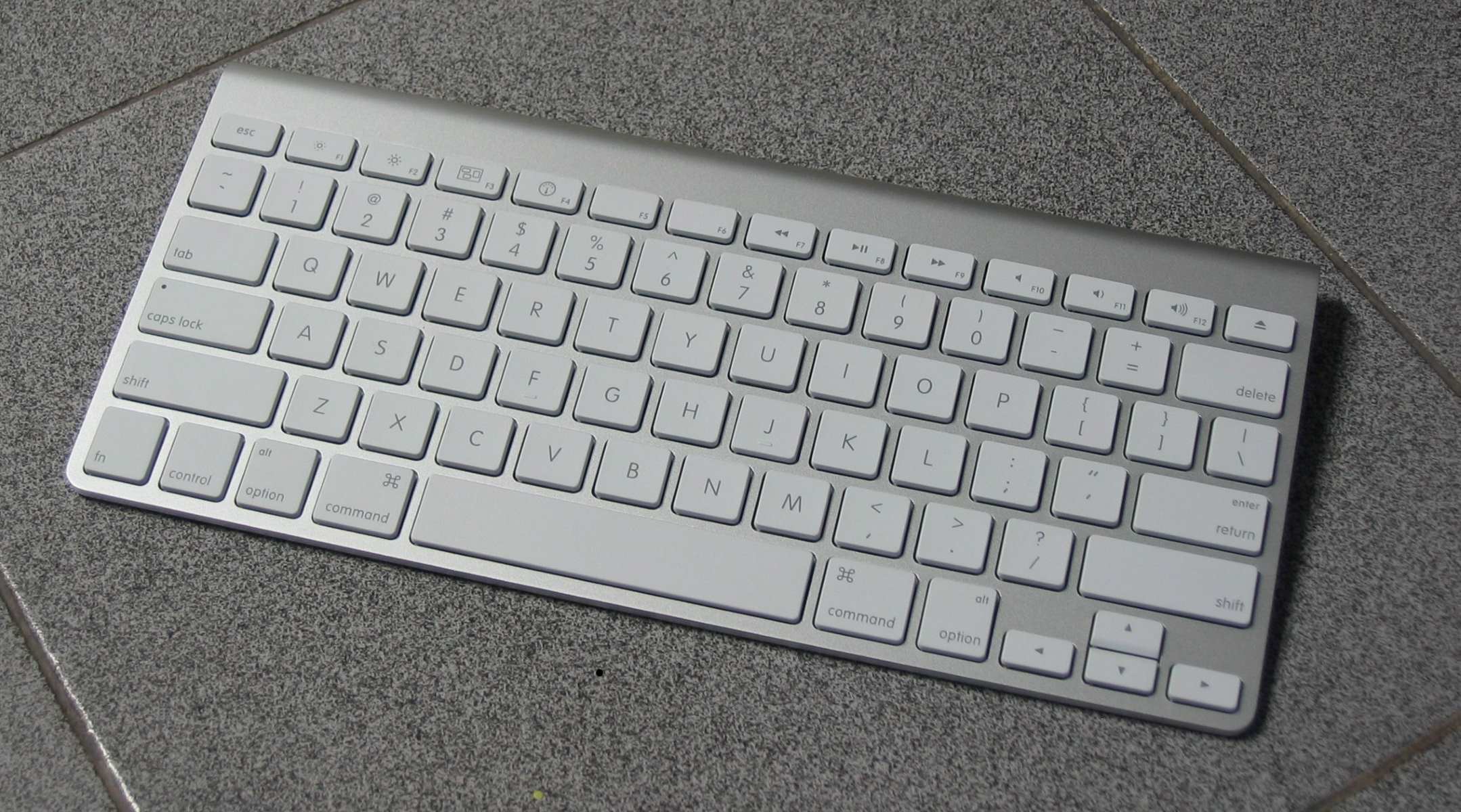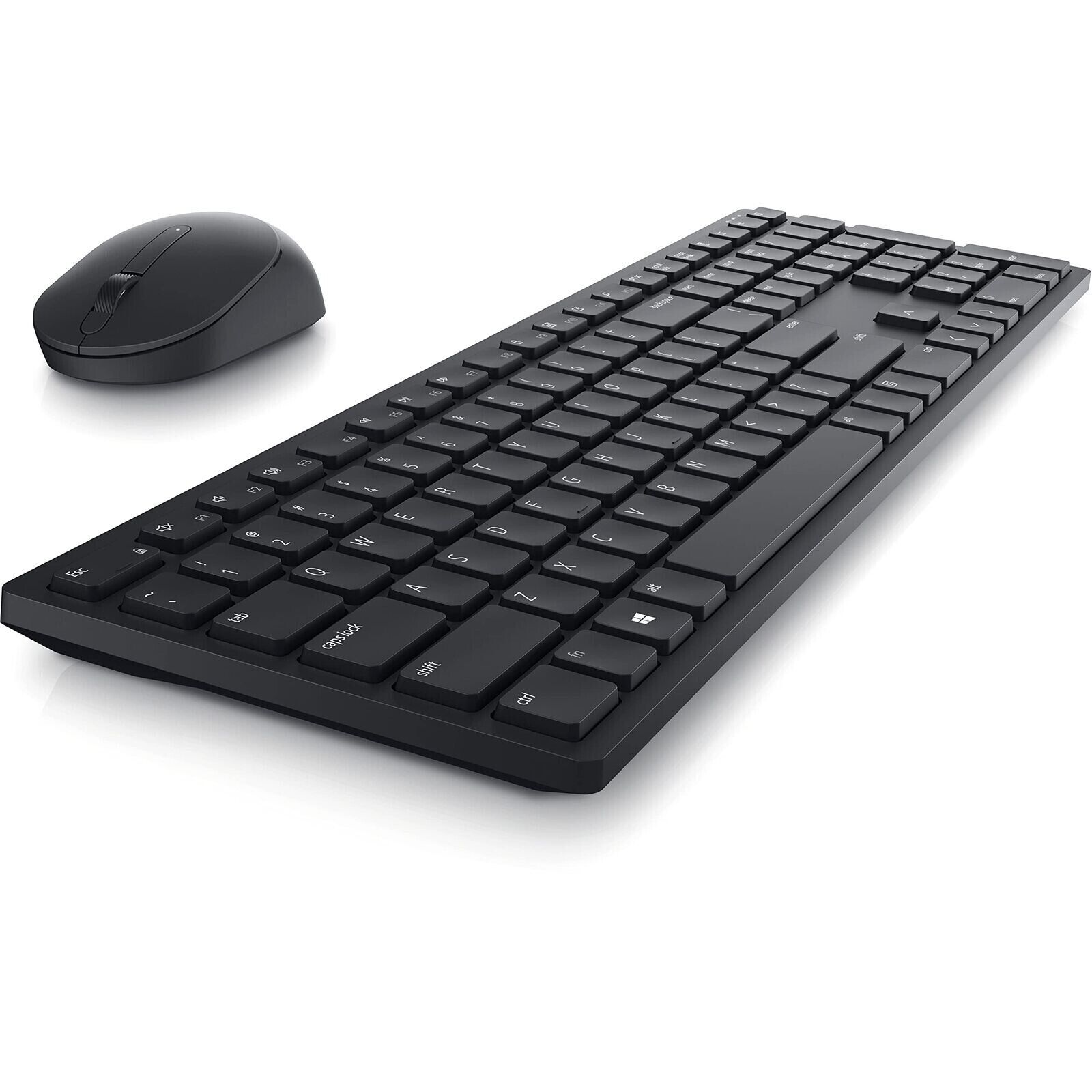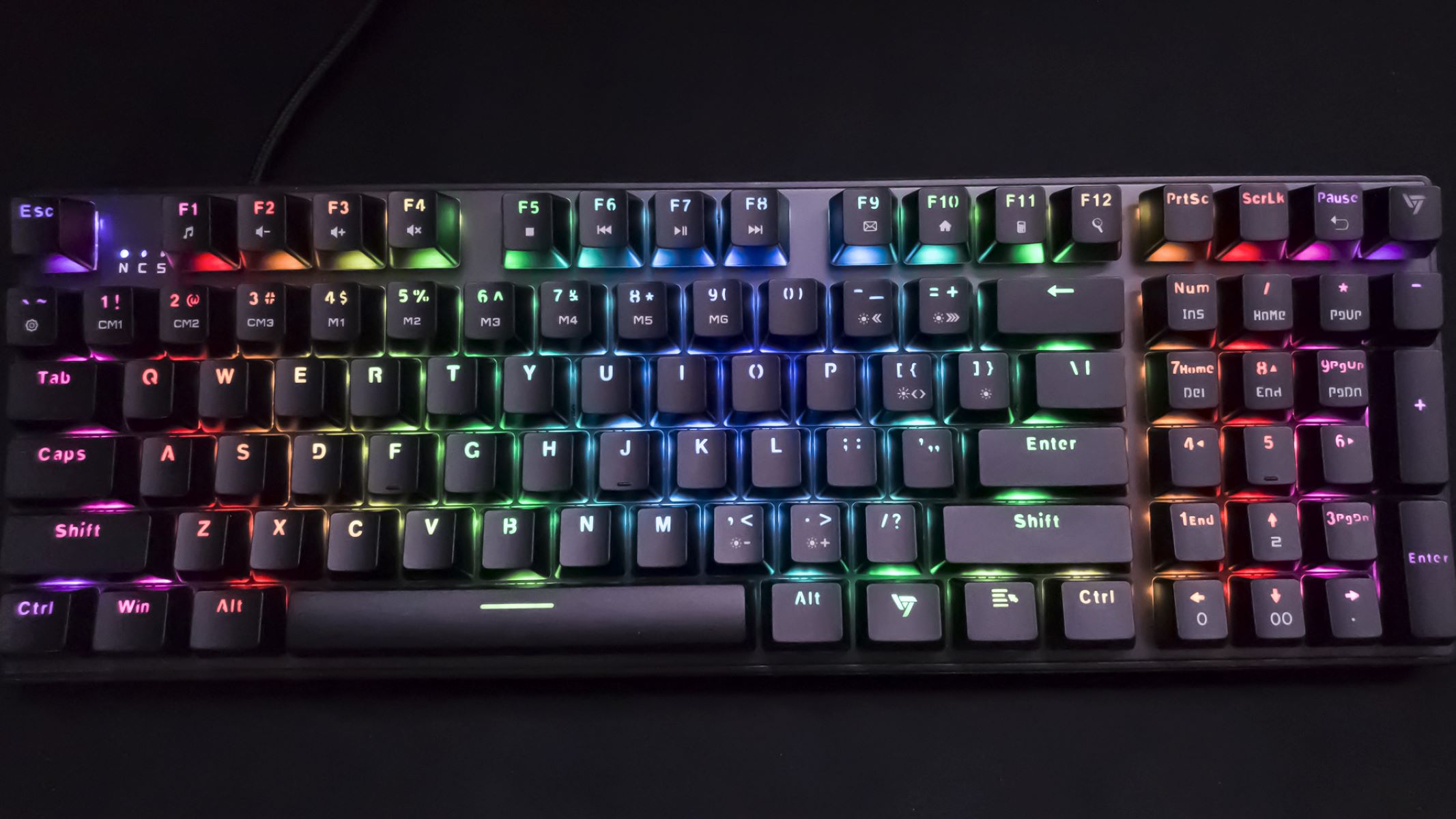Introduction
Welcome to the world of wireless technology, where convenience meets versatility. Gone are the days of tangled wires and limited mobility. In this increasingly connected world, even our keyboards have shed their cords to provide a seamless and flexible user experience. A wireless keyboard offers a host of benefits, allowing you to type and navigate with freedom and efficiency.
Imagine being able to sit back on your couch, with your keyboard resting gently on your lap, as you effortlessly control your computer or smart device from a distance. Whether you are a professional working in an office or a casual user at home, a wireless keyboard opens up new possibilities for productivity and comfort.
But how exactly does a wireless keyboard work? What are the key components that enable its functionalities? What are the different connectivity options available? In this article, we will delve into these questions and explore the fascinating world of wireless keyboards.
Before we dive in, it’s essential to note that wireless keyboards come in two main types: Bluetooth and RF (radio frequency) keyboards. While they both offer the convenience of wire-free operation, the underlying technologies that power them are different, each with its advantages and considerations.
So, whether you’re considering purchasing a wireless keyboard or just curious about the inner workings of this innovative device, read on to discover how a wireless keyboard can transform your typing experience.
What is a wireless keyboard?
A wireless keyboard is a keyboard that does not require a physical connection to a computer or other devices. Unlike traditional keyboards with cords that need to be plugged into a USB port, a wireless keyboard uses wireless technology to establish a connection with the desired device. This allows for greater flexibility and convenience, as you can use the keyboard from a distance, without being restricted by the length of a cord.
Wireless keyboards are commonly used with computers, laptops, tablets, and even smart TVs. They provide a wireless connection, enabling you to control the device from a comfortable distance, whether you’re sitting in your living room or giving a presentation in a conference room.
These keyboards come in various sizes and layouts, just like their corded counterparts. You can choose between full-sized keyboards with a dedicated number pad, compact keyboards without a number pad, or even ergonomic keyboards designed for more comfortable typing. Many wireless keyboards also feature additional multimedia keys and shortcut buttons, allowing you to perform actions like adjusting volume or launching applications with ease.
Wireless keyboards rely on different wireless technologies to establish a connection with the target device. The most common technologies used are Bluetooth and RF (radio frequency).
Bluetooth wireless keyboards connect to devices using Bluetooth technology, which is a wireless communication standard. This technology allows for a secure and efficient connection between the keyboard and the device, using short-range radio waves. Bluetooth keyboards are compatible with various devices, including laptops, tablets, smartphones, and smart TVs, as long as they support Bluetooth connectivity.
On the other hand, RF wireless keyboards use radio frequency technology to establish a connection. These keyboards typically come with a USB receiver that plugs into the device’s USB port and communicates with the keyboard using radio waves. RF keyboards offer a longer range of connectivity compared to Bluetooth keyboards, allowing you to control your device from even greater distances.
Now that you have a better understanding of what a wireless keyboard is and its general functionality, let’s explore the different components that make up these keyboards and the technologies behind them.
Components of a wireless keyboard
A wireless keyboard is composed of several key components that work together to provide a seamless typing experience. Understanding these components will give you a better grasp of how a wireless keyboard operates. Let’s take a closer look at each of these components:
1. Keycaps: These are the individual keys on the keyboard that you use to enter text or commands. Keycaps are usually made of plastic and are labeled with symbols, letters, and numbers.
2. Switches: Underneath each keycap, there is a switch that registers when a key is pressed. These switches come in different types, such as membrane switches, scissor switches, or mechanical switches. Mechanical switches are highly popular among enthusiasts for their tactile feedback and durability.
3. PCB (Printed Circuit Board): The PCB is the backbone of the keyboard. It houses the electrical circuits that connect the keys to the wireless module and the controller. This allows the keyboard to transmit the input signals wirelessly to the connected device.
4. Wireless Module: The wireless module is the component responsible for establishing the connection between the keyboard and the device. It can be either a Bluetooth module or an RF module, depending on the type of wireless technology used by the keyboard.
5. Batteries: Most wireless keyboards rely on batteries for power. These batteries can be either disposable (such as AA or AAA batteries) or rechargeable (built-in or replaceable). It’s important to consider battery life and the type of batteries required when choosing a wireless keyboard.
6. Antenna: The antenna is a crucial part of the wireless module that picks up and transmits signals. It ensures a stable and reliable connection between the keyboard and the device.
7. Controller: The controller is the brain of the keyboard. It processes keystrokes, manages the wireless communication, and sends the input signals to the connected device. The controller is usually integrated into the PCB.
8. Housing: The housing of the keyboard is the outer case that encloses all the components. It provides protection and structural integrity to the keyboard. Wireless keyboards come in various designs, materials, and form factors to suit different user preferences.
These are the main components that make up a wireless keyboard. The integration and interaction of these components enable the smooth and wireless transmission of keystrokes to the connected device.
Now that you have a good understanding of the components, let’s explore the different wireless technologies used in wireless keyboards: Bluetooth and RF.
Bluetooth technology
Bluetooth technology has revolutionized the way we connect and interact with our devices wirelessly. It is a wireless communication standard that allows for seamless connectivity between devices over short distances using radio waves.
Bluetooth technology is widely used in wireless keyboards, as it provides a secure and efficient connection with minimal power consumption. Here’s how it works:
1. Pairing: To connect a Bluetooth keyboard to a device, you need to pair them. Pairing is a one-time setup process where the keyboard and the device exchange unique identification codes, known as Bluetooth MAC addresses. This pairing process ensures that only the intended device can connect to the keyboard.
2. Frequency Hopping: Bluetooth operates in the 2.4 GHz frequency range. To minimize interference from other wireless devices using the same frequency, Bluetooth uses frequency hopping. It rapidly switches between different frequency channels within the range, ensuring a stable and interference-free connection.
3. Power Consumption: Bluetooth technology is designed to be energy-efficient. It uses a low-power sleep mode when not in use and automatically wakes up when a key is pressed. This enables longer battery life for wireless keyboards, reducing the need for frequent battery replacements or recharging.
4. Range: Bluetooth keyboards typically have a range of up to 30 feet (10 meters) from the connected device. This allows for flexibility in placing the keyboard while still maintaining a reliable connection.
5. Compatibility: Bluetooth technology is ubiquitous across various devices, including smartphones, tablets, laptops, and desktop computers. As long as the device has Bluetooth capabilities, it can connect to a Bluetooth keyboard without the need for additional adapters or dongles.
6. Security: Bluetooth connections are encrypted to ensure data security. This means that the keystrokes you enter on a Bluetooth keyboard are transmitted securely to the connected device, minimizing the risk of eavesdropping or unauthorized access.
Bluetooth technology has significantly advanced over the years, with the latest Bluetooth versions offering improved speed, range, and energy efficiency. Bluetooth Low Energy (BLE) is a variation of Bluetooth technology that further reduces power consumption, making it ideal for devices with limited battery capacity.
With its widespread compatibility and reliable performance, Bluetooth technology has become the preferred wireless connectivity option for many users of wireless keyboards.
Now that you have a good understanding of Bluetooth technology, let’s explore another popular wireless technology used in wireless keyboards: RF (Radio Frequency).
RF technology
RF (Radio Frequency) technology is another common wireless communication method used in wireless keyboards. It operates by transmitting data via radio waves on specific frequencies, allowing for a reliable and long-range connection between the keyboard and the device.
Here’s how RF technology works in wireless keyboards:
1. USB Receiver: RF wireless keyboards typically come with a USB receiver that needs to be plugged into the USB port of the device. The USB receiver acts as a receiver and transmitter, establishing a connection between the keyboard and the device using radio waves.
2. Frequencies: RF uses a specific frequency band for communication, such as the 2.4 GHz or 5 GHz frequency band. These frequency bands are regulated, ensuring that multiple devices can be used in close proximity without interference. Some keyboards even offer multiple channels within these frequency bands to further reduce interference and improve connection stability.
3. Pairing: RF keyboards also require a pairing process to establish a secure connection between the keyboard and the USB receiver. This pairing process ensures that the keyboard and the receiver can communicate with each other and prevents interference from other nearby wireless devices.
4. Range: One of the advantages of RF technology is its long-range capability. RF wireless keyboards can typically operate within a range of 30 to 100 feet (9 to 30 meters), depending on the specific model and environmental conditions.
5. Power Consumption: RF wireless keyboards generally consume slightly more power compared to Bluetooth keyboards due to the need for both the keyboard and the USB receiver to be powered. However, advancements in power conservation technologies have led to the development of energy-efficient RF keyboards.
6. Dongles and Compatibility: RF keyboards require a USB receiver, or dongle, to establish the wireless connection. This means that devices without a USB port, such as smartphones or tablets, may require additional adapters or accessories to connect to an RF keyboard.
RF technology is popular among users who require a longer range for their wireless keyboards or who prefer a specific wireless format that differs from Bluetooth. It offers a reliable and stable connection, making it suitable for various applications, including gaming, presentations, and multimedia control.
Now that you have an understanding of RF technology, let’s explore how wireless keyboards connect to devices using these wireless technologies.
How does a wireless keyboard connect to a device?
A wireless keyboard utilizes different methods to establish a connection with the desired device. The specific method depends on the wireless technology employed by the keyboard, whether it be Bluetooth or RF. Let’s take a closer look at how wireless keyboards connect to devices:
1. Bluetooth Connection:
To connect a Bluetooth keyboard to a device, the following steps are typically involved:
- Ensure that the Bluetooth feature is enabled on the device you want to connect the keyboard to.
- Put the Bluetooth keyboard into pairing mode. This is usually done by pressing and holding a specific key or a combination of keys on the keyboard.
- On the device, navigate to the Bluetooth settings and search for available devices.
- Select the Bluetooth keyboard from the list of available devices and initiate the pairing process.
- Enter any necessary codes or PINs requested by the device to complete the pairing process.
- Once successfully paired, the keyboard will be ready to use with the device.
2. RF Connection:
To connect an RF wireless keyboard to a device, follow these steps:
- Insert the USB receiver, or dongle, into an available USB port on the device.
- Turn on the wireless keyboard and place it within the range of the USB receiver.
- The keyboard and the USB receiver will automatically synchronize and establish a connection.
- Once the connection is established, the keyboard will be ready to use with the device.
- In some cases, a pairing process may be required for initial setup, where the keyboard and the USB receiver exchange information to establish a secure connection.
It’s worth noting that some wireless keyboards come with multi-device support, allowing you to connect and switch between multiple devices seamlessly. This is especially useful for individuals who work with multiple devices or need to switch between devices frequently.
Overall, the process of connecting a wireless keyboard to a device is relatively straightforward, and the keyboard should establish a stable and reliable connection once properly paired or synchronized.
Now that we’ve explored how wireless keyboards connect to devices, let’s discuss battery life and power consumption, which are essential considerations for users of wireless keyboards.
Battery life and power consumption
Battery life and power consumption are crucial factors to consider when using a wireless keyboard. Since wireless keyboards rely on batteries for power, it’s essential to understand how long the batteries will last and the overall power consumption of the device.
1. Battery Life:
The battery life of a wireless keyboard can vary significantly depending on factors such as the type of batteries used, the frequency of use, the backlighting (if applicable), and the power-saving features of the keyboard.
Generally, wireless keyboards that use disposable batteries, such as AA or AAA, tend to have a longer battery life compared to keyboards with built-in rechargeable batteries. Disposable batteries can last anywhere from several months to over a year, depending on usage patterns.
Keyboards with built-in rechargeable batteries typically require more frequent recharging but offer the convenience of not having to replace batteries. The battery life on these keyboards can vary from a few days to a few weeks, again depending on usage and other factors.
2. Power Consumption:
Wireless keyboards are designed to be energy-efficient, with features that help conserve power and prolong battery life. For example, most keyboards have a power-saving mode that automatically puts the keyboard into sleep mode after a period of inactivity. When a key is pressed, the keyboard quickly wakes up and resumes operation.
Other power-saving features may include adjustable backlighting intensity (if applicable) or the ability to turn off backlighting completely when not needed. These features contribute to reducing power consumption and increasing overall battery life.
It’s important to note that keyboards with more advanced features, such as RGB lighting or additional programmable buttons, may have higher power consumption. It’s always a good idea to check the specifications provided by the manufacturer to get an idea of the expected battery life and power consumption of a particular wireless keyboard.
In addition to regular battery replacements or recharging, it’s recommended to have spare batteries or keep the keyboard charged to ensure uninterrupted usage. Many wireless keyboards also come with battery level indicators, either through indicator lights or software notifications, to let you know when it’s time to replace or recharge the batteries.
By being mindful of battery life and power consumption, you can enjoy the convenience of a wireless keyboard without constantly worrying about running out of power.
Next, let’s examine the advantages and disadvantages of using a wireless keyboard.
Pros and cons of using a wireless keyboard
Wireless keyboards offer a range of benefits and conveniences compared to their wired counterparts. However, there are also a few drawbacks to consider. Let’s explore the pros and cons of using a wireless keyboard:
Pros:
- Flexibility and Mobility: One of the main advantages of wireless keyboards is the freedom of movement they provide. You’re not limited by the length of a cord and can use the keyboard from a comfortable distance, whether you’re sitting on the couch or presenting in a meeting room.
- Reduced Cable Clutter: Wireless keyboards eliminate the need for cords and cables, resulting in a cleaner and more organized workspace. This is especially beneficial for those who value a minimalistic and clutter-free setup.
- Easy Connectivity: Wireless keyboards typically connect to devices through straightforward pairing processes (Bluetooth) or USB receivers (RF). This makes it quick and simple to switch between devices or connect to multiple devices at the same time.
- Added Comfort and Ergonomics: Wireless keyboards offer flexibility in positioning, allowing you to find a comfortable typing position. Some wireless keyboards also feature ergonomic designs that promote better wrist and hand alignment, reducing the risk of strain and discomfort.
- Mobility and Portability: Wireless keyboards are lightweight and portable, making them ideal for on-the-go professionals or individuals who frequently work from different locations.
Cons:
- Battery Life and Power Dependency: Wireless keyboards require batteries for power, which means they have a limited battery life. Users must ensure they have spare batteries or keep the keyboard charged to avoid interruptions during use.
- Wireless Interference: Wireless keyboards can be susceptible to interference from other wireless devices operating on the same frequency band. However, advanced technologies such as frequency hopping (Bluetooth) or multiple channels (RF) help minimize interference and maintain a stable connection.
- Compatibility and Dongles: Some wireless keyboards may require specific adapters or dongles to connect to certain devices. These additional accessories might be an inconvenience, especially if the device lacks compatibility or available ports.
- Potential Latency: While most wireless keyboards have low latency, there might be a slight delay between keystrokes and the corresponding actions on the screen. However, for everyday use and typical tasks, this latency is often negligible.
- Initial Setup: Setting up a wireless keyboard may require initial pairing or synchronization steps, which can be slightly more involved compared to plugging in a wired keyboard and starting to use it immediately.
It’s essential to weigh these pros and cons based on your specific needs and preferences before deciding on whether a wireless keyboard is the right choice for you.
Next, let’s take a look at some important features to consider when purchasing a wireless keyboard.
Important features to consider
Choosing the right wireless keyboard can greatly enhance your typing experience and productivity. Here are some important features to consider when purchasing a wireless keyboard:
- Keyboard Layout and Design: Consider the layout and design of the keyboard. Determine whether you prefer a full-sized keyboard with a dedicated number pad, a compact keyboard without a number pad for portability, or an ergonomic keyboard that promotes better wrist and hand alignment.
- Connectivity Options: Check the connectivity options of the wireless keyboard. Determine if it uses Bluetooth or RF technology and ensure that it is compatible with the device you intend to use it with. If using RF, make sure it includes a USB receiver or dongle.
- Battery Life: Consider the expected battery life of the wireless keyboard. Look for keyboards with longer battery life if you prefer less frequent battery replacements or recharging. Rechargeable keyboards with convenient charging methods may also be a good option.
- Ease of Use: Evaluate the ease of use features. Look for keyboards with intuitive and responsive keys, adjustable backlighting (if desired), and additional multimedia keys or shortcut buttons for convenience.
- Compatibility: Ensure that the wireless keyboard is compatible with the operating system of your device, whether it be Windows, macOS, Android, or iOS. Compatibility extends beyond just the connection, as some keyboards may have specific functions or software that is optimized for certain operating systems.
- Build Quality: Consider the build quality and durability of the wireless keyboard. Look for keyboards made with sturdy materials that can withstand everyday use. User reviews and ratings can provide insights into the quality and longevity of a specific keyboard.
- Price: Set a budget for your wireless keyboard purchase. Compare options within your budget and evaluate the features and specifications to find the best value for money. Remember that higher-priced keyboards may offer additional features or premium build quality.
- Reviews and Recommendations: Research and read customer reviews and recommendations for the wireless keyboard you are considering. This can provide valuable insights into the real-world performance, reliability, and user experience of the keyboard.
By considering these important features, you can make an informed decision and select a wireless keyboard that meets your needs, preferences, and budget.
Now that you have a good understanding of the key features to consider, let’s wrap up this article by summarizing the key points and highlighting the benefits of using a wireless keyboard.
Conclusion
Wireless keyboards have revolutionized the way we interact with our devices, providing flexibility, convenience, and enhanced mobility. Whether you’re a professional working on a computer, a student typing notes on a tablet, or a gamer playing on a smart TV, a wireless keyboard offers numerous benefits for all types of users.
By utilizing Bluetooth or RF technology, wireless keyboards eliminate the restrictions of cords and cables, allowing you to type and navigate from a comfortable distance. The key components of a wireless keyboard, such as keycaps, switches, PCBs, wireless modules, batteries, and controllers, work together to provide a seamless and wire-free typing experience.
Bluetooth technology enables secure and efficient connections between the keyboard and the device, while RF technology offers longer range capabilities. Both options have their advantages and considerations, depending on your specific needs and preferences.
When choosing a wireless keyboard, consider factors such as battery life, power consumption, connectivity options, keyboard layout, ease of use, compatibility, build quality, and price. Assessing these features will help you find the right wireless keyboard that suits your requirements and enhances your productivity.
While wireless keyboards offer many advantages, it’s important to be aware of their limitations, such as the need for battery replacements or recharging, potential wireless interference, and a slight latency compared to wired keyboards. However, these trade-offs are often outweighed by the convenience and freedom that wireless keyboards provide.
So, whether you’re looking to declutter your workspace, improve ergonomic comfort, or simply enjoy the flexibility of wire-free typing, a wireless keyboard is a worthwhile investment.
Now armed with the knowledge of how wireless keyboards work, their components, connectivity options, battery life, and other important features to consider, you can confidently choose the perfect wireless keyboard to suit your needs and elevate your typing experience.







